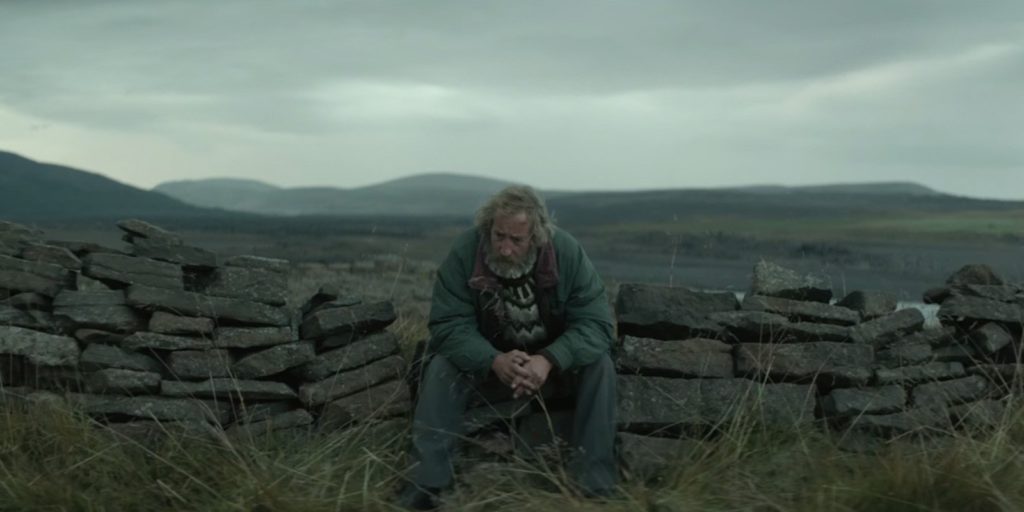Blending Boundaries: RAMS at Cornell Cinema

(Courtesy of Cohen Media Group)
By JULIA CURLEY
This story was first published on April 14 here.
Grímur Hákonarson’s Icelandic film, RAMS, won’t warm you up. Set in a secluded, mountainous valley, winter rolls into the lives of Gummi and Kiddi, two sheep-rearing brothers, much as it does in Ithaca, and brings with it an ironically accessible story of death and rebirth. Despite the wind and snow, RAMS captures the warmth of our approaching spring.
The film combines an understanding of humanity and nature in the lives of Gummi and Kiddi, two aging men, neighbors and antagonists. When scrapie, a brain-eating sheep disease, infects Kiddi’s herd, veterinarians demand that every sheep and ram in the valley be slaughtered. What follows is a drama that challenges the brothers’ 40-year-long silence and blurs rigidly accepted separations.
Hákonarson frames his story as a work of art, shot by shot linked together with sporadic language. The plot unfolds through expression, movement and implied meaning. But, the film avoids hermeticism through Hákonarson’s impressive understanding of psychology and its bridging the gaps from the animal to the human. Gummi and Kiddi, as well as the community as a whole, cohesively blend with their surroundings. The villagers reject all boundaries between the natural and the modern through their sheep-like beards, sparse use of words and oneness with the landscape. Hákonarson’s vast Icelandic scenery captures the simplicity that underlies Gummi and Kiddi’s decades-long loathing. Where the two men deny their own closeness, they remain desperately attached to the same lineage of sheep. Where the brothers lack in familial communication, they succeed in loving, understanding and caring for their rams.
Through Hákonarson’s artistic framing and each actors affinity for unspoken communication, RAMS tells a universal story. The beautiful and chilling landscapes shape a charming metatheatre in which the Scrapie that infects the sheep mirrors an affliction of their caretakers. The infection requires a renewal of stock and a simultaneous acknowledgment of deeply rooted tensions between brothers. Scrapie promises to reappear with a failure to root out the virus, just as the brothers’ violent and hostile history insures repeating its angry course without a detoxification. The diseased sheep function not only as a basis for confrontation in RAMS, but also as a mirror of the unfolding drama. Together, the two stories align to emphasize each part’s validity. The human and the animal join forces in RAMS to tell a story that overcomes all differences — of language, of distance, of species. Hákonarson’s film speaks to viewers through visual expressions and elicits compassion through its simplicity. Each frame, combining the quaint village culture with the breath-taking landscape, understands the action of the film and develops along with its characters. Through the director’s artistry, RAMS exists as a picture of enduring humanity, equality and unity.
Hákonarson blends several morals that his actors successfully convey through their presence, expression and speech. The characters act among each other — naturally — as if they themselves evolved to play such roles as the rams succeeded in their parts without rehearsal or intention. Each performance appears instinctive and convincing, not only due to Hákonarson’s environment, but to Gummi and Kiddi’s compelling relationship. The central men, and their surrounding family members, capture the simultaneous closeness and distance within communities. The value of each character’s role assumes an extra weight through the scarcity of lines. The script forces cast members to display an unspoken understanding of their character. Both actors mirror their sheep and one another. The roles of Gummi and Kiddi, played by Sigurdur Sigurjonsson and Theodor Juliusson respectively, expertly fit the naturalness of the landscape and the remorselessness of the sheep. With the combined help of each actor, the film successfully dissolves into its own meaning. Each part exists alone, but fades into the next in order to share its powerful human message.
And, with the blending of nature and humanity, RAMS invites its audience to sympathize along with its characters, to feel in the tragedy, and join in the renewal. Hákonarson relates each element of his film — the sickness of the sheep, the hostilities between brothers, the landscape and the valley — in order to weave a story accessible to all audiences. As spring approaches in Ithaca, it’s a good time for cleaning out. RAMS captures this shocking, sad and beautiful process of starting anew. The story challenges each viewer’s morals, loyalties and sympathies through the quiet lives of Gummi and Kiddi.
Despite the oceanic barrier between the 92 minute film and Cornell Cinema, RAMS conveys a sympathetic message to even the most frost-bitten Cornellian. The vast Icelandic landscape captures a snapshot of life far beyond the remote village. The film communicates, simply and completely, a message ironically appropriate for a diverse crowd of moviegoers. RAMS shares the beautiful Icelandic landscape with a touching story of disinfecting and accepting.
To read more arts & entertainment stories, visit cornellsun.com.
